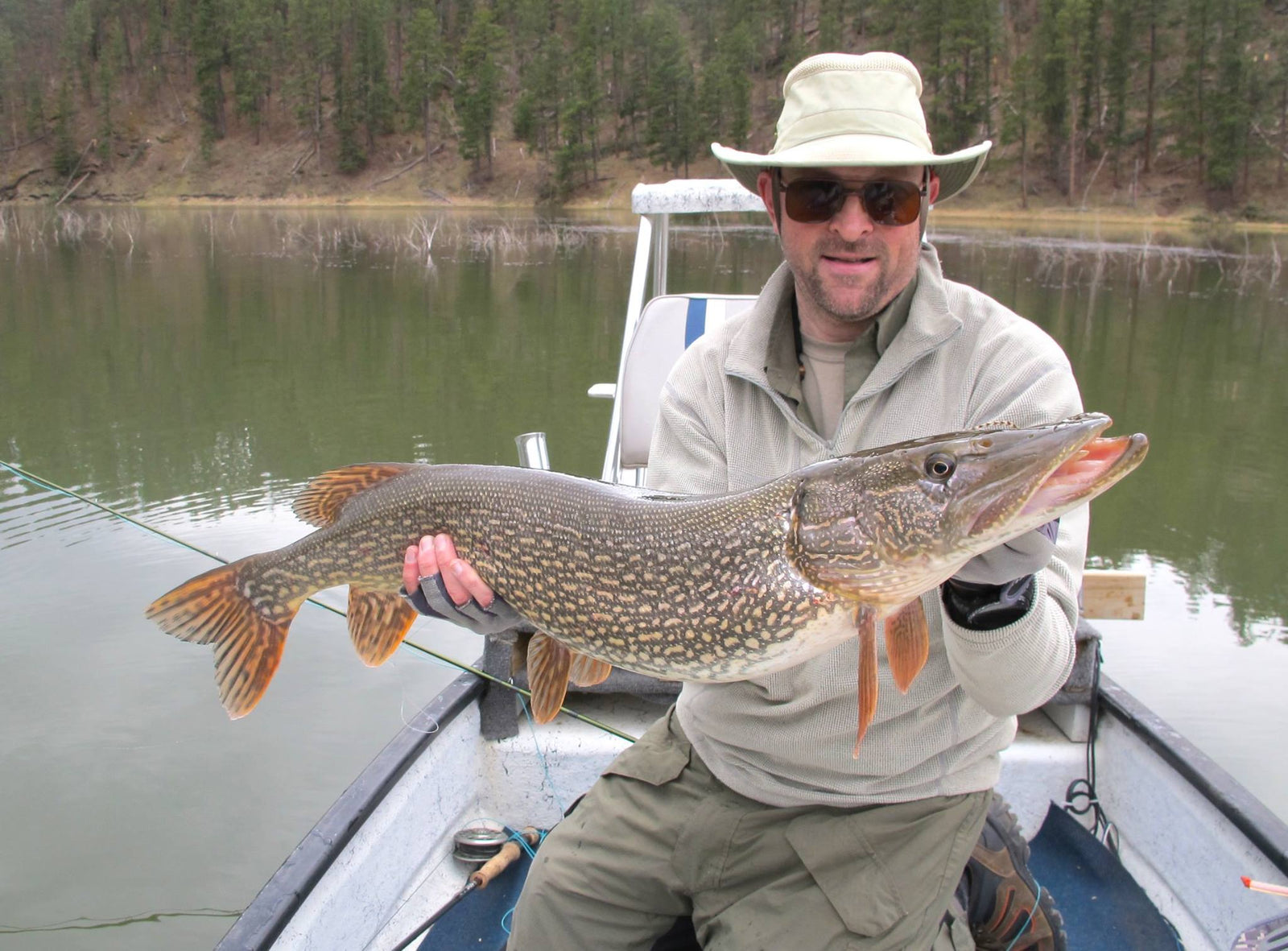Flyfishing for Pike - 5 Tips!

Ryan Gabert |
Flyfishing for Pike can be some of the most exciting fishing of the year - explosive takes, big fish, and lots of sight fishing. However, they aren't always easy. Here's a few tips that have helped me scratch out a few fish on otherwise tough days!
Rods and Lines - Flyfishing for pike usually requires throwing some pretty large flies, sometimes up so 7 or 8 inches long, so you're going to need a fairly heavy rod to throw them. I recommend at least a seven weight, and an eight or a nine isn't overkill by any means. You could catch the fish on a five weight, but it's much easier to throw giant rabbit and deer hair flies for hours with a heavier rod. Another key is the line you choose - there's lots of specialty fly lines out that are made to throw big, nasty flies. I've been fishing a RIO Pike/Musky Intermediate on my 8 weight, and I've really been impressed with it so far. The RIO Powerfly is a great option too, as well as the Pike/Musky in the floating version. The rod and line work together to make throwing big divers and rabbit leeches easier on you!
Leaders and Tippet - Bite tippet is extremely important in pike fishing, for a couple of reasons. First, you don't want to lose a twenty pound pike because you're fishing mono instead of wire. Second, you don't want to be losing $10 Dahlberg Divers to every hammer handle that eats it. The RIO Toothy Critter Leaders are a great option that won't break the bank, and they're easy to use. Just loop them on like a regular leader, and then snap your flies on using the clasp on the front. The clasps also give your fly a better action, similar to a loop knot. The other option is using a tie-able wire leader material from RIO or Tyger Wire. For this, I use a butt section of 25-40 lb Maxima that's 5-7 feet long, and then blood knot on a foot or so of wire leader material to the end of that. The heavy butt section enables you to turn over the big flies you throw for pike, and the wire keeps you from losing flies and fish.
Flies - Big flies catch more pike than smaller flies in my experience. It seems to take a big fly to motivate the pike to move, especially the larger ones. There's a myriad of different patterns that work, and I think that having a good selection of floating and sinking flies, in a few different sizes and colors is more important than the particular pattern itself. Have flies in all different weights so you can cover the surface to the bottom of the water column. I don't think that you can have anything too large - I've caught twenty inch northerns on nearly ten inch flies.
Locations - This time of year, the pike are in shallow water, often up in the weeds and cattails, and it's largely a visual thing. Look for dark bottomed bays, and shallower water that's going to warm up faster than the rest of the lake. The warmer water attracts pike from throughout the lake and concentrates them in a smaller area. Once it warms up even more though, they're going to move deeper. When this happens, you need to put on either a sink line, or a loop-on Versileader and getting down to the fish. Pike like edges - weed edges, rock edges, drop offs, and even shade lines. Concentrate on these areas, and you'll catch more and bigger pike.
Techniques - Pike behavior can run from running down small birds and crashing bluegills off the surface, to laying on the bottom of the lake and not wanting to move an inch to eat. When the pike are active, they'll eat big divers and big streamers fished fast. When the stars align and you get a day like that, it's easy and the pike attack flies with a vengeance. However, when the pike are less active they take a little more persuasion and coaxing to eat. Deeper and slower usually works for me when this happens, almost like you're fishing for smallmouth. Don't be afraid to get right down on the bottom with your flies, and you'll definitely get more strikes when they aren't super active.
Hopefully these tips help you catch a few more pike! It's been good lately, and the best pike fishing of the year will probably last a couple more weeks before they go deeper. If you have any other questions about what to use, where to go, or how to use it, swing by the shop or give us a call and we can get you squared away. Thanks!
Ryan Gabert
